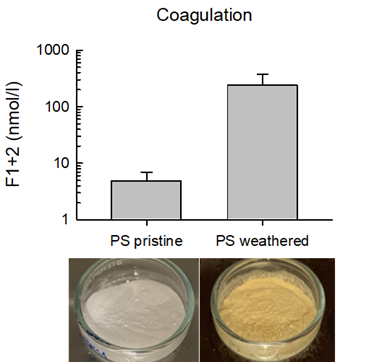News
Paper "Weathered microplastics in human blood: Unraveling the effect of structural changes at the particle surface on coagulation and platelet activation" published

The new paper "Weathered microplastics in human blood: Unraveling the effect of structural changes at the particle surface on coagulation and platelet activation" by Manfred F. Maitz, Robin Lenz, Steven Winkler, Mara F. Abschke, Carsten Werner and Dieter Fischer highlights the impact of environmental factors on the biological performance of common microplastics.
Micro- and nanoplastic particles from abrasion or degradation of plastic products have become omnipresent in the environment, and particles also enter the human body and the bloodstream. This collaborative study of different IPF groups formed microplastic particles of 10 different polymers that resemble environmental particles in shape and environmental weathering. The authors showed with spectroscopic methods and zeta potential measurements that weathering changed the chemical surface properties of the particles. Frequently used polymers such as polystyrene (PS), polyethylene terephthalate (PET), and polyvinylchloride (PVC) exhibit oxidation and more acidic surface characteristics after exposure to environmental factors such as UV light, humidity, and temperature changes. These weathered particles induce substantially higher blood coagulation than their pristine counterparts and may pose a thrombotic risk to individuals exposed to them.
The paper was published in Microplastics and Nanoplastics. DOI: 10.1186/s43591-025-00139-4
12.08.2025

